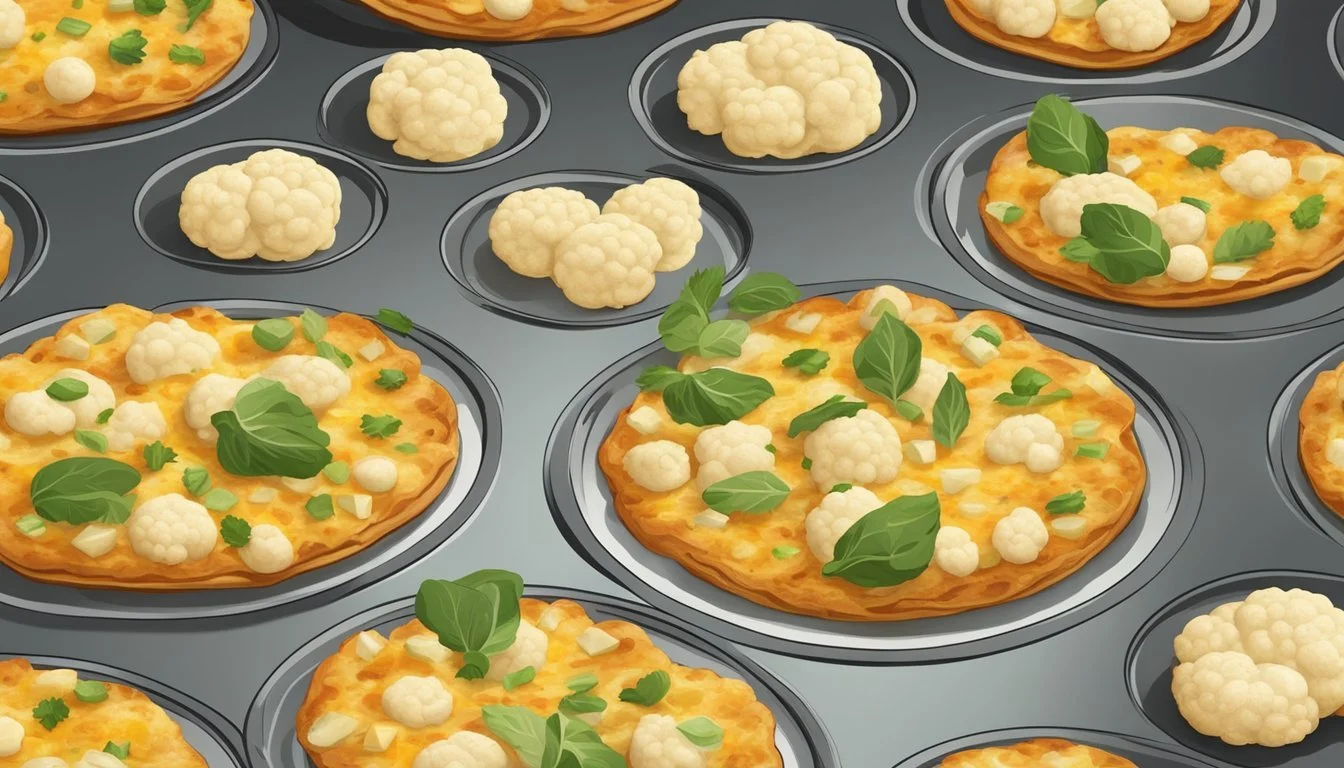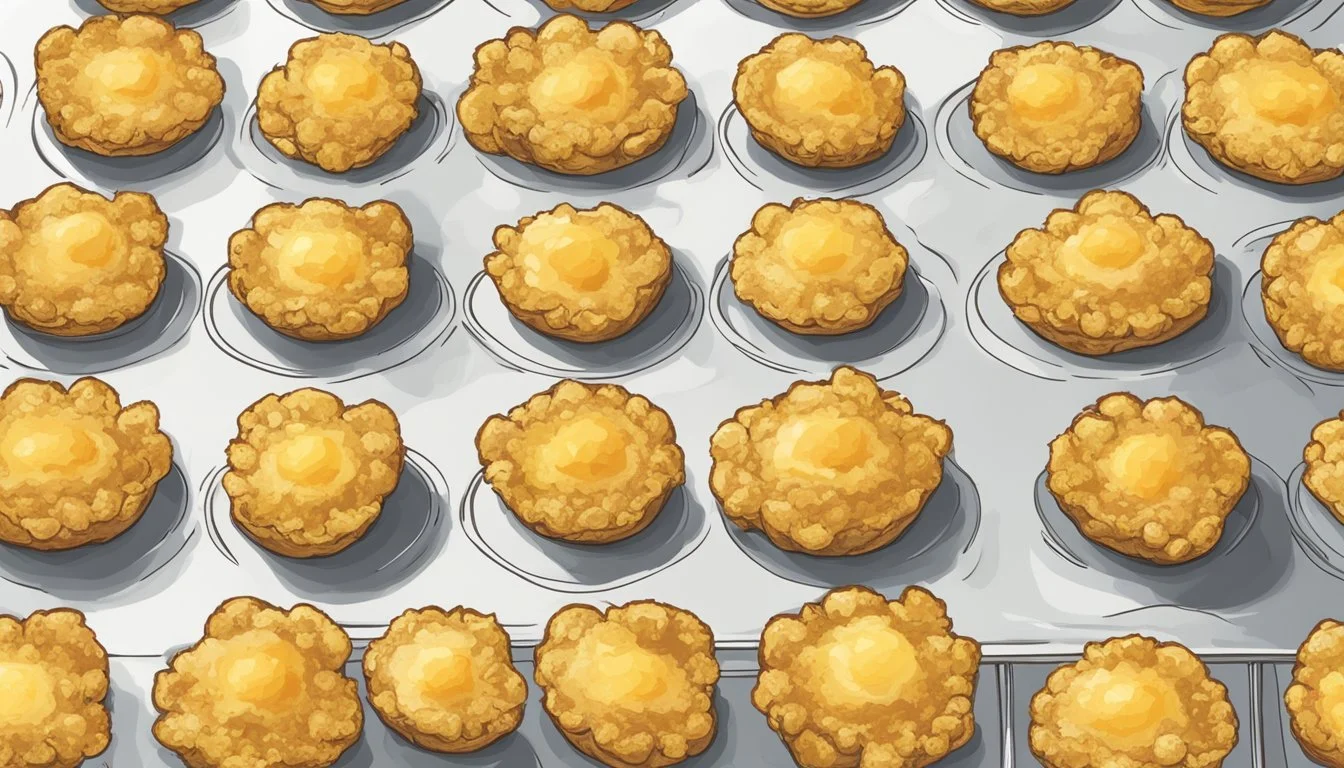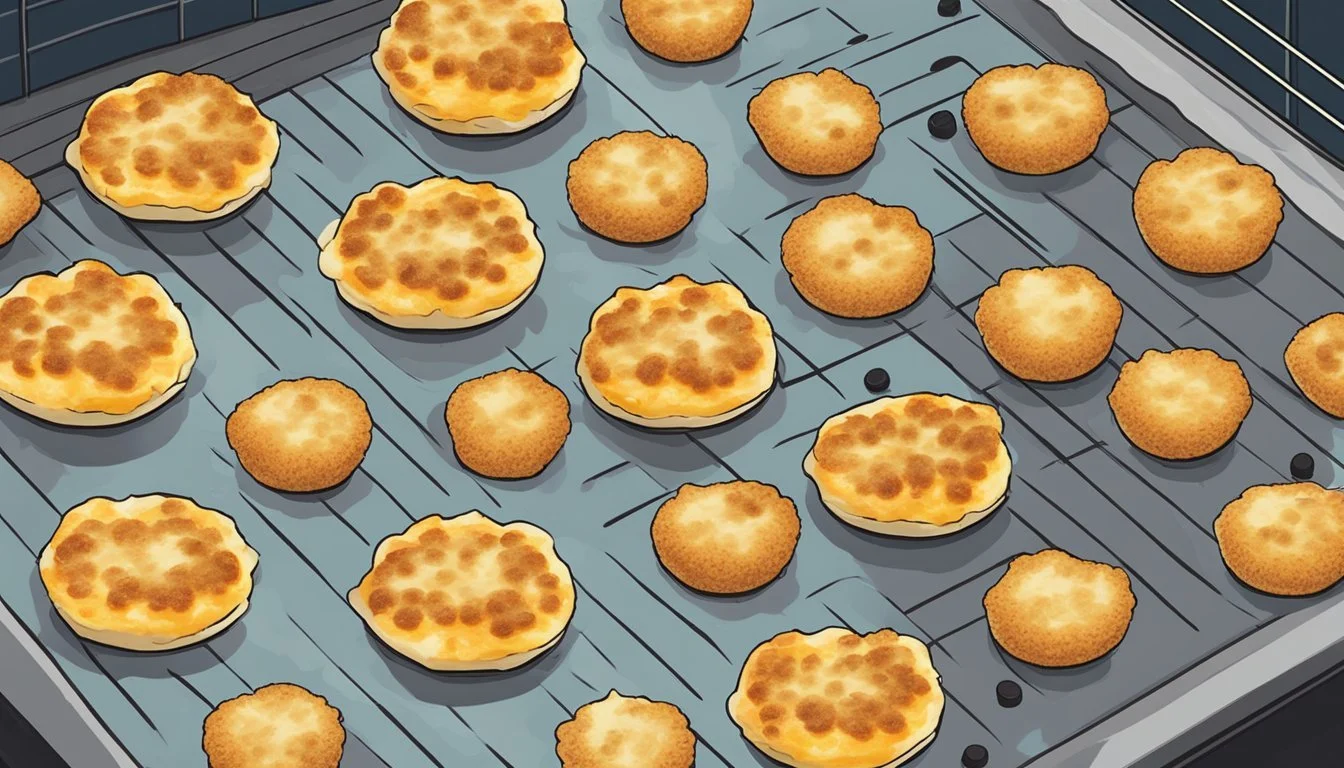How to Reheat Gluten-Free Cauliflower Crust Pizza Bites
Best Techniques for a Perfect Snack
Reheating gluten-free cauliflower crust pizza bites can be straightforward and rewarding, ensuring that this healthy snack remains as delicious as when first made. To achieve the best results, pan-searing the pizza bites over medium heat with a splash of water and a lid to trap steam can help maintain the crispiness of the crust while melting the cheese to a perfect consistency. This method proves effective by combining the benefits of a re-crisped base and evenly warmed toppings.
For those relying on convenience, using a microwave with a small cup of water can also be an option. Although it may not replicate the crispiness achieved through pan-searing, it provides a quick solution for those in need of a fast and easy snack. Balancing health and convenience, these reheating methods ensure your gluten-free, cauliflower-based bites stay enjoyable and nutritious.
Ensuring that the pizza bites retain their delightful texture and flavor can make a significant difference. By following these simple reheating techniques, anyone can enjoy a tasty and healthy gluten-free snack with minimal effort. This approach allows the enjoyment of cauliflower pizza bites at any time without sacrificing quality.
Benefits of Gluten-Free Cauliflower Pizza Bites
Gluten-free cauliflower pizza bites offer numerous advantages, especially for those conscious of health and dietary restrictions. These bites are nutritious, cater to specific diet needs, and can align with various eating plans like keto.
Nutritional Profile
Cauliflower pizza bites are packed with nutrients. Cauliflower itself is a rich source of vitamin C, potassium, and fiber. It provides significant amounts of iron and calcium as well. Additionally, these bites often contain low calories, making them a great option for weight management.
Moreover, protein content can be increased by adding ingredients like cheese or plant-based proteins, which enhance the overall nutritional value. This makes them suitable for those needing higher protein intake without excessive saturated fats or cholesterol.
Catering to Dietary Needs
These pizza bites are inherently gluten-free, making them a safe and tasty option for those with celiac disease or gluten sensitivity. They also fit well into low-carb and keto diets, as cauliflower itself is low in carbohydrates.
The bites can be customized to be keto-friendly by ensuring all ingredients are low in sugar and carbs. Furthermore, using alternative flours such as almond or coconut flour can enhance their dietary compatibility. This versatility makes cauliflower pizza bites an excellent choice for a wide variety of dietary preferences and restrictions.
Creating a Perfect Base
To achieve a delicious gluten-free cauliflower crust for pizza bites, the key is in the preparation of the cauliflower, the binders, and the seasoning. Each step plays a crucial role in ensuring the crust holds together and bursts with flavor.
Preparing Cauliflower Rice
Start by transforming the cauliflower into rice-sized pieces using a food processor. It's essential to pulse until fine granules form, mimicking the texture of rice.
Avoid over-processing, as this can create a mash, unsuitable for crust. Once riced, remove excess moisture by microwaving the rice for 8-10 minutes and then pressing it through a clean, dry cloth. Adequate moisture removal ensures a crispy base.
Binding Ingredients
Binding agents play a critical role in holding the cauliflower and other ingredients together. Combine the riced cauliflower with eggs which help in binding and adding richness.
Addition of cheese such as mozzarella and parmesan provides not only binding qualities but also a deliciously cheesy texture. Mix in gluten-free flour and baking powder to further stabilize the crust. Using a large bowl, mix these ingredients thoroughly to form a cohesive dough.
Seasoning and Flavors
Seasoning is vital for making the crust flavorful. Use a blend of Italian herbs like oregano, basil, and Italian seasoning to infuse the base with traditional pizza flavors. Adding garlic powder, salt, and red pepper flakes enhances the overall taste.
Sprinkle spices evenly into the dough mixture. Ensure even distribution to avoid bland spots. This seasoned base forms the foundation for a satisfying and flavorful pizza experience.
The key to success is the right blend of herbs, proper moisture management, and careful mixing of binding components.
Prepping and Cooking
To make perfect gluten-free cauliflower crust pizza bites, gathering the right ingredients and following the proper cooking steps is essential. Utilizing a preheated oven, careful assembly, and proper baking techniques ensure deliciously crispy and flavorful bites.
Preheat Oven Instructions
Set the oven temperature to 375°F (190°C). Preheating is crucial as it primes the oven for even cooking and optimal texture.
While the oven heats, line a baking sheet with parchment paper to prevent sticking or opt for a muffin tin for well-shaped pizza bites.
Make sure to have all ingredients like cauliflower pizza crust, mini pepperoni, olives, and bell peppers ready for quick assembly once the oven reaches the desired temperature.
Assembling the Pizza Bites
Cut the cauliflower pizza crust into small, bite-sized pieces or use pre-made mini crusts. Place crust pieces on the lined baking sheet or into the muffin tin cups.
Add a spoonful of pizza sauce over each crust piece. Sprinkle toppings such as mini pepperoni, sliced olives, diced bell peppers, or other favorite veggies.
For a cheesy finish, top each bite with a small pile of grated mozzarella or another melting cheese. Ensure toppings are evenly distributed for balanced flavors in each bite.
Baking Process
Place the assembled bites in the preheated oven. Bake for 10-12 minutes if using a baking sheet, or 12-15 minutes in a muffin tin. Cooking until the cheese is melted and bubbly.
To achieve a crispy crust, consider an additional 2-3 minutes under the broiler, but keep a close watch to avoid burning.
Remove the bites from the oven and let them cool for a few minutes before serving. This helps the cheese set and the bites hold together better. Enjoy warm for the best taste and texture.
Reheating for Best Results
For the best results when reheating gluten-free cauliflower crust pizza bites, consider using an oven, microwave, or air fryer. Each method has its own approach to maintaining the crispy texture and ensuring the snack remains delicious.
Oven Reheating Technique
Using the oven is ideal for achieving a crispy texture. Preheat the oven to 375°F (190°C). Place the pizza bites on a baking sheet lined with parchment paper. This prevents sticking and makes for easy clean-up.
Reheat the bites for 8-10 minutes. If the bites were stored in an airtight container in the fridge, you might need an extra minute or two. Turn halfway through to ensure even reheating. Check that the crust is crispy and the cheese, if any, is melted.
Microwave Method
The microwave is faster but can make the bites less crispy. To prevent sogginess, place the pizza bites on a microwave-safe plate with a paper towel underneath to absorb moisture.
Microwave on high for 1-2 minutes. Adding a small cup of water in the microwave helps maintain moisture balance. For firmer bites, avoid overcooking. This method is convenient for quick reheating but compromises some texture quality.
Alternative: Air Fryer Use
The air fryer is an excellent choice for quick reheating while maintaining crispiness. Preheat the air fryer to 350°F (175°C).
Place the pizza bites in a single layer in the air fryer basket. Reheat for 5-7 minutes. Shake the basket halfway through to ensure even cooking. This method combines the speed of the microwave with the crispiness of the oven, making it a favorite for many.
Each method offers a balanced approach to reheat gluten-free cauliflower crust pizza bites, ensuring they remain a tasty appetizer or snack.
Storing Leftovers
Properly storing cauliflower crust pizza bites ensures they stay fresh and maintain their flavor and texture. There are effective ways to store them in both the refrigerator and freezer.
Airtight Container Storage
Storing cauliflower pizza bites in an airtight container helps maintain quality.
Cool Completely: Ensure the pizza bites cool completely before storing. This prevents condensation, which can make them soggy.
Choose the Right Container: Use a container that fits the bites snugly without crushing them. Excess air space can lead to moisture build-up.
Refrigerate: Place the container in the fridge. Shelf-life in the refrigerator is generally 3-4 days. Labeling the container with the date helps track freshness.
Keeping them in an airtight container minimizes exposure to air, which helps preserve their taste and texture.
Freezing for Longevity
Freezing is an excellent option for extending the shelf-life of cauliflower pizza bites.
Pre-Freeze Steps: Wrap each bite individually in plastic wrap or aluminum foil. This step prevents them from sticking together.
Use Freezer Bags: Place the wrapped bites in a resealable freezer bag. Vacuum-sealed bags are ideal as they minimize air exposure.
Freezer Temperature: Ensure your freezer is set at 0°F (-18°C) or lower to maintain optimal quality.
Labeling: Label the freezer bags with the date and type of food for easy identification.
Frozen cauliflower pizza bites can last up to 2-3 months. Reheating in the oven straight from the freezer without thawing can help retain their crispiness.
Customization and Serving Ideas
There are many ways to customize cauliflower crust pizza bites to suit different tastes and dietary preferences. From various topping combinations to unique sauce pairings, the options are endless.
Topping Variations
One of the great benefits of cauliflower crust pizza bites is their customizable nature. You can experiment with a variety of pizza toppings to cater to different flavor profiles.
For a classic taste, consider pepperoni, mozzarella, and basil. Vegetarian options could include bell peppers, red onions, mushrooms, and black olives. You can also create a vegan version by using plant-based cheese and toppings like spinach, artichokes, and cherry tomatoes.
For those who enjoy a gourmet touch, try prosciutto, arugula, and goat cheese. Adding a sprinkle of fresh herbs like rosemary or oregano can elevate the flavor even further. Remember to keep the toppings light to avoid making the crust soggy.
Sauce Pairing Suggestions
The type of sauce used can drastically change the flavor profile of your pizza bites. Traditional marinara sauce is always a reliable choice, offering a tangy and savory base that pairs well with a wide range of toppings.
For a creamier option, consider an alfredo or garlic white sauce. These sauces complement toppings like spinach, mushrooms, and chicken beautifully. If you're aiming for a healthier twist, opt for a pesto sauce, which pairs well with sun-dried tomatoes, fresh basil, and mozzarella.
Another unique choice is barbecue sauce, which goes great with chicken, red onions, and cilantro. This option offers a slightly sweet and smoky taste that can turn your pizza bites into a real treat.








